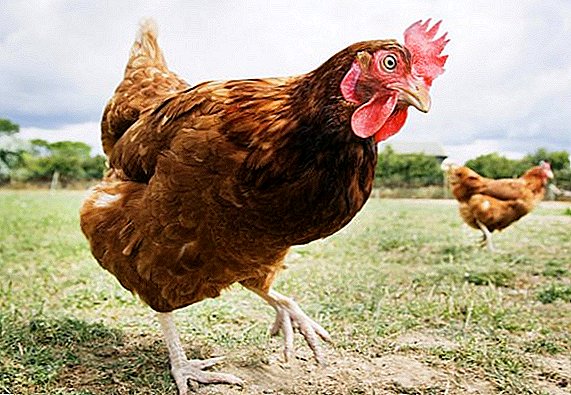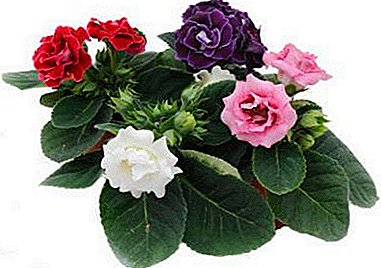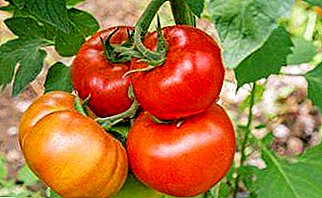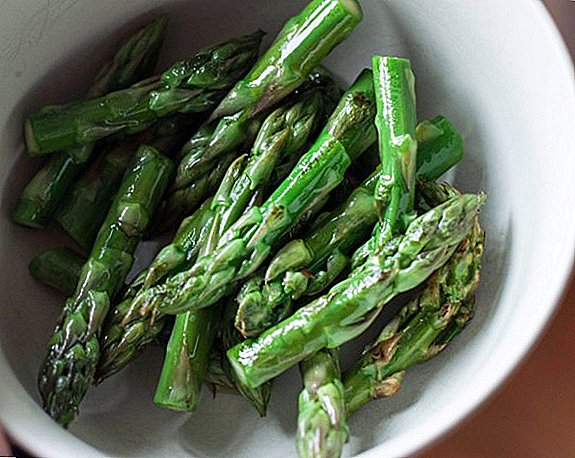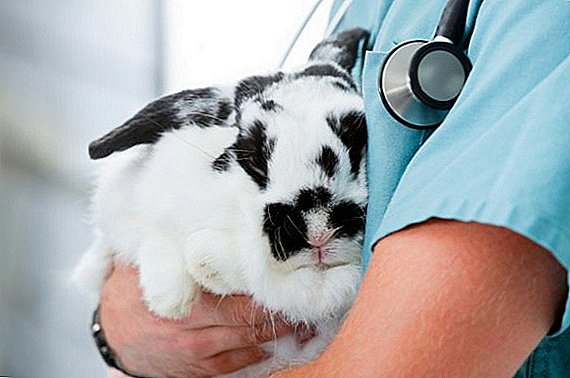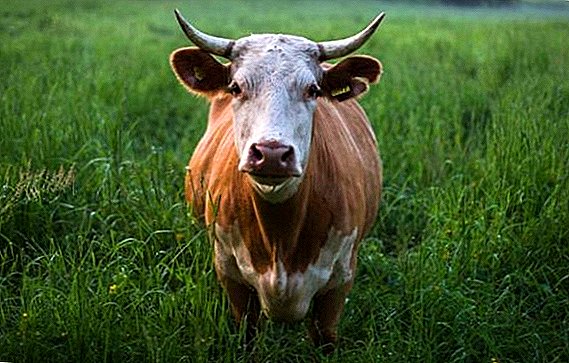 As with other animals, helminthiasis in cows is a common disease. In the article we will talk about how dangerous it is, whether it needs to be treated and what treatment methods are most effective.
As with other animals, helminthiasis in cows is a common disease. In the article we will talk about how dangerous it is, whether it needs to be treated and what treatment methods are most effective.
What are dangerous worms for adult cows, bulls and calves?
Each species of farm animals affects a separate species of worms, which have a different effect on the health of the cattle. Those types of worms, which most often infect cows, adversely affect the liver of the animal and damage the metabolic processes, as well as the digestive system.
They can damage the liver so much that they block the bile ducts. Parasites weaken the body of the cow, deplete it, undermine the immune system, lead to a reduction in the amount of milk, increase the incidence of chronic diseases.
In the presence of parasites in the body of a cow, vitamins and minerals that the animal receives from the feed do not enter it sufficiently: almost all of them are consumed by worms. When infested with tapeworms, there may be volvulus, peritonitis, the outcome of which is lethal.
Learn how to get lice from a cow.
If nothing is done to remove the parasites in question, they will slowly poison the body of the animal with toxins, which are released during their vital activity. As a result, the overall health and productivity of the cows will suffer. Toxins are spread throughout the body by blood, in severe cases they cause tissue necrosis.
How does the infection occur?
Worms and their eggs are excreted in the feces of animals. The excrement of grass together enters the gastrointestinal tract of healthy animals, leading to their infection. If different types of livestock are grazed together, then the parasites can move from one animal to another: for example, from sheep to cows or vice versa.  The carriers of parasites are snails, ants or other insects that spread them across the pasture. Once inside the body, snails or insects carry with them and worms. Also, parasites can enter the body of cows through insect bites, along with infected feed and water.
The carriers of parasites are snails, ants or other insects that spread them across the pasture. Once inside the body, snails or insects carry with them and worms. Also, parasites can enter the body of cows through insect bites, along with infected feed and water.
Did you know? The cows sleep for short periods of time. Their deepest sleep lasts from 1 to 5 minutes.
Symptoms of appearance
The disease can occur without symptoms or with the manifestation of characteristic signs, including:
- weight loss;
- loss of productivity, in particular, a decrease in the amount of milk;
- frequent staying of the animal in the supine state, refusal to rise to its feet, weakness;
- loss of appetite;
- depressed look;
- the presence of gastrointestinal disorders in the form of diarrhea or constipation;
- anemia and exhaustion;
- hair loss;
- pallor of mucous membranes;
- loss of wool luster;
- reduced milk quality.
 In the advanced stages join:
In the advanced stages join:- runny nose;
- fever;
- cough.
Symptoms of helminthic invasion are usually pronounced in young animals.
Important! If you suspect that your cows have worms, you should make tests to confirm the diagnosis and determine the type of worms to choose the correct treatment regimen. The diagnosis of helminthic invasion is made on the basis of stool analysis.
How to remove worms from cows
Today it is known about the presence of many types of worms. They are divided into gastrointestinal, respiratory, subcutaneous, degenerative flukes, tapeworms, etc.
The selection of a drug for treatment may depend on the type of parasite, there are also broad-spectrum means with various methods of destruction. When worms are detected, even in one animal, the entire herd is dewormed. In addition to drugs, worms are also derived by folk methods.
Video: how to get worms from cows
Medicinal preparations
Most often for the treatment of helminthic invasion such drugs are used:
- "Alvet", "Flubendazole" - affect the parasite nutritional system. Depending on the type of parasites, the dose of "Alveta" per 1 animal ranges from 3.75 g to 5 g per 100 kg of live weight, while Flubendazole - 10 mg per 1 kg of weight;
- Albendazole (Alben) - suppresses the metabolism of worms at all stages of their development. Dosage: 75-100 mg per 10 kg of weight. The introduction of a single;
- "Tetramizole" - paralyzes worms. Dosage: 1.5 g per 10 kg;
- "Febtal" - leads to impaired carbohydrate metabolism of parasites and blocks their ability to multiply. Dosage: 1 ml per 1 kg of weight.
Read more about what diseases can hurt cows and how to treat them.
Medications are given orally. The dosage of each of them is calculated depending on the weight of the animal, so before the introduction of the drug must be weighed cow. One dose is diluted individually for each individual.
Those who have never performed deworming should know that it is quite difficult to administer the drug alone. One person must fix the head of the animal, and the second - to feed him. After the introduction of the medication is necessary to make a record, where to specify the date, time and dosage.  After the drug is injected, the clothes of the person who dewormed and the instrument should be disinfected. Since medicines are usually toxic, personal safety measures should be observed when working with them - wash hands thoroughly before and after the procedure, do not eat and drink, do not smoke, protect body and hands with overalls, and face - with a mask.
After the drug is injected, the clothes of the person who dewormed and the instrument should be disinfected. Since medicines are usually toxic, personal safety measures should be observed when working with them - wash hands thoroughly before and after the procedure, do not eat and drink, do not smoke, protect body and hands with overalls, and face - with a mask.
Important! When treating with drugs, it is imperative to adhere to the recommendations of the veterinarian on the dosage or instructions attached to the drug. It is impossible to move away from the dosage or the drug administration scheme without permission: this can harm the health of the animal, since all drugs have side effects.
Folk remedies
Often, livestock breeders resort to the help of folk remedies, but their treatment is much more troublesome and longer than with drugs. Much more often folk remedies are used for the purpose of prevention.
Cows are introduced to food:
- pumpkin;
- Birch tar;
- flax seeds and oil;
- sagebrush;
- top dressing with anthelmintic substances;
- soda solution.

Can I drink milk and eat meat
Since some types of worms from cows can go to a person and cause serious harm to his health, you can not eat meat and milk of an infected cow. Also, these products are forbidden to feed other pets, such as cats and dogs.
After the treatment, beef and cow's milk should not be consumed for some time. The period of prohibition depends on the drug used in therapy. For example, if the treatment was made with the drug "Alben", then the restriction on eating meat products lasts 3 weeks, and the consumption of milk is 1 week.
Preventive measures
The prevention of preventive measures helps to significantly reduce the risk of helminth infection:
- monitoring the state of water, its timely replacement in drinking bowls;
- control over feed quality;
- timely cleaning of food that fell on the floor;
- maintaining dryness and cleanliness in the barn;
- disinfection of equipment and premises where livestock is kept twice a year;
- grazing of young cows separately from mature individuals;
- keeping pasture change;
- regular deworming activities - twice a year, in autumn and spring.
 Disinfection of the barn, as a method of preventing helminthic invasion
Disinfection of the barn, as a method of preventing helminthic invasionThus, helminthiasis is a common disease of cattle, which can lead to serious health problems in animals and to negative economic consequences for the economy.
Did you know? The eyes of a cow can glow in the dark if she looks at the headlights of a car or a flashlight. This is due to the presence in the structure of the organs of vision of a special pigment that can reflect light and enhance its low levels.If symptoms occur, treatment should be made, however, it is easier and cheaper to prevent infection by worms, while observing preventive measures.


